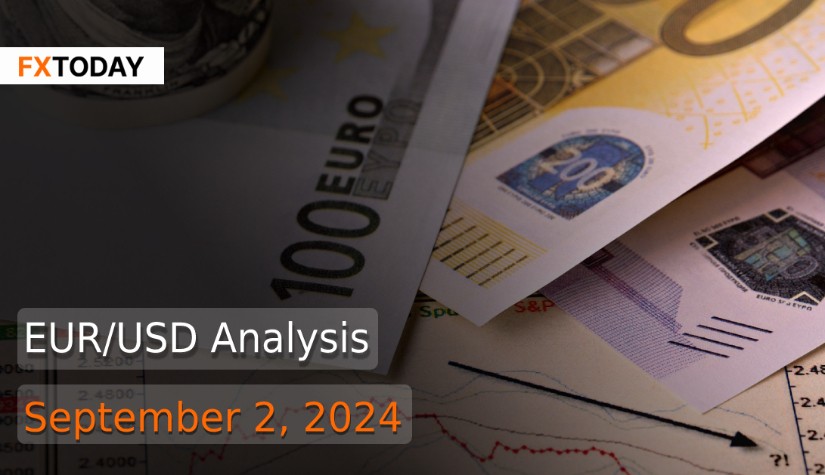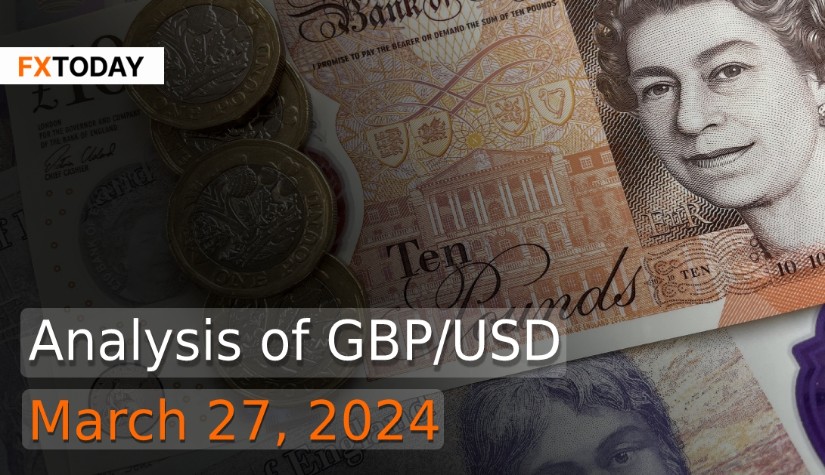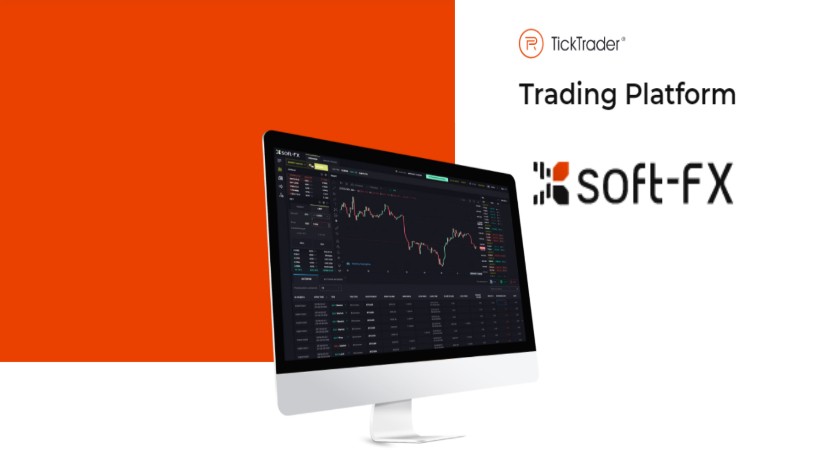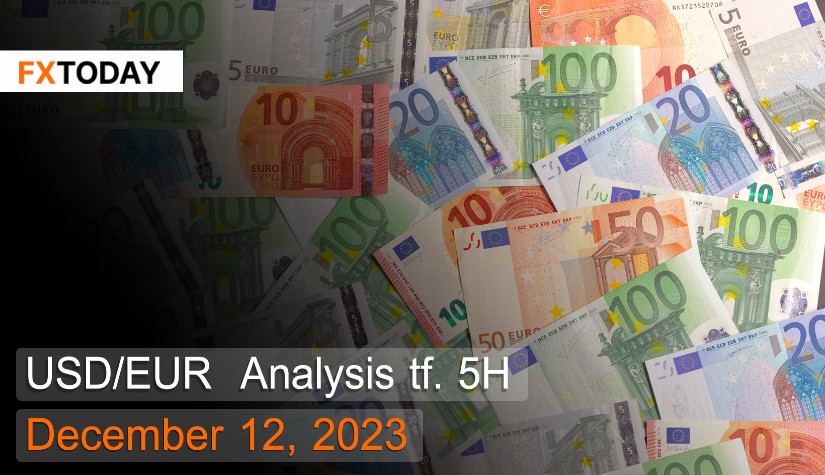ECB Rate Cut Expectations; U.S. Dollar Hits Two-Week High
In August, the euro rose by 2.1%, marking its best performance since November 2023, as the European Central Bank (ECB) remains poised to reduce interest rates again.
UBS highlighted that the upcoming U.S. presidential election could impact the European economy, particularly in trade and defense. Regardless of the election outcome, a major trade deal between the U.S. and the EU is unlikely. A Trump administration may focus on protectionist measures, while a Harris presidency would likely maintain continuity in trade and defense policies, offering stability for European investors.
European nations are preparing for greater self-reliance in defense, driven by the energy crisis and the conflict in Ukraine. Increased defense spending could strain European budgets, especially if U.S. support wanes.
The ECB is expected to continue lowering interest rates as eurozone inflation fell to 2.2% in August, the lowest in three years. French and Dutch policymakers suggest gradual rate cuts, but caution that more data is needed before further decisions are made. The fall in inflation was largely due to lower energy prices, though there are concerns about the sustainability of this trend.
Despite easing inflation, the eurozone faces economic challenges, including slow wage growth, rising unemployment, and weakened lending and investment. The ECB's primary focus remains achieving a 2% inflation target, but broader economic weaknesses may influence future policy decisions.
Eurozone consumer inflation expectations remained steady in July, with a median forecast of 2.8% over the next 12 months, according to an ECB survey. This stability, along with resilient business activity in August, might cause the ECB to hesitate in making further rate cuts this year.
German inflation dropped more than anticipated in August, reaching its lowest level in over three years. Inflation fell to 2.0% from 2.6% in July, driven by lower energy prices. Inflation rates decreased across several key German states, including North Rhine-Westphalia, suggesting a notable national decrease.
The German labor market showed a smaller-than-expected increase in unemployment in August, with the jobless rate holding steady at 6.0%. However, the economy contracted slightly by 0.1% in the second quarter of 2024, confirming economic stagnation.
Consumer sentiment in Germany is expected to decline in September due to rising unemployment and economic uncertainty, while business morale also fell for the third consecutive month in August, indicating a deepening economic crisis.
In Germany, home prices are expected to stabilize in the coming months and rise by 2% in 2025, supported by anticipated interest rate cuts. The real estate market, which saw significant declines during the pandemic, is beginning to recover as borrowing costs decrease.
Italy is working on a medium-term budget plan that aims to bring its deficit-to-GDP ratio below the European Union's 3% ceiling by 2026. Italy's fiscal plan outlines a path to reduce the deficit from an expected 4.3% of GDP in 2024 to 3.6% in 2025, and further down to 2.9% in 2026. Currently, Italy's deficit stands at 7.4% of GDP, the highest in the eurozone, inflated by generous incentives for energy-saving home improvements.
The U.S. dollar saw significant gains on Monday, reaching a two-week high against the euro as market participants began to reassess their expectations for the Federal Reserve's upcoming policy decisions. The shift in sentiment was primarily driven by a recalibration of bets on the extent of interest rate cuts, with traders now anticipating less aggressive easing from the Fed. This focus has shifted towards the upcoming U.S. jobs report, which is expected to provide crucial insights into the health of the economy and the Fed’s next moves.
A rise in long-term U.S. Treasury yields, which reached their highest levels since mid-August, followed a key U.S. inflation measure that held steady, reducing the likelihood of the Fed implementing a significant 50 basis points (bps) interest rate cut at its next meeting on September 18. Instead, the market is now leaning towards a smaller 25 bps cut.
The dollar's upward momentum was further supported by data released on Friday, which indicated that personal spending and income had both increased, and a key inflation gauge, the Personal Consumption Expenditures (PCE) price index, rose by 0.2% in July, in line with expectations. This steady inflation data, combined with robust consumer spending, suggested that the U.S. economy remained on solid footing, lessening the need for a larger rate cut.
Consumer sentiment also showed signs of improvement. The University of Michigan’s monthly consumer sentiment index edged up to 67.9 in August from July’s eight-month low of 66.4, snapping a four-month decline. The survey indicated that U.S. consumers expect inflation to continue moderating over the next year, with one-year inflation expectations dropping to 2.8% from 2.9% in July, marking the lowest level since December 2020.
Meanwhile, the U.S. housing market is expected to see modest price increases over the next few years, despite tight supply and anticipated rate cuts from the Fed. According to a Reuters poll, U.S. home prices are projected to rise by a median of 5.4% in 2024, following a smaller increase of 3.3% in 2025. While affordability remains strained, the expectation of rate cuts and limited housing supply are likely to underpin the market.
Looking ahead, the market's attention is firmly on the upcoming U.S. jobs report, which could influence the Fed's decision-making process. The report is seen as critical in determining whether the Fed will opt for a 25 bps or 50 bps rate cut at its September meeting. Any signs of weakness in the labor market could reignite concerns about a potential recession, which had previously unsettled markets in late July and early August. Other key labor market indicators, including the Jolts job openings report, ADP private sector hiring data, and weekly jobless claims, will also be closely watched in the lead-up to the jobs report. Thus, it's anticipated that the Euro might experience significant fluctuations and weaken against the US dollar in the medium term, driven by the varying economic returns and strengths of the two economies.
Data for Technical Analysis (1H) CFD EUR/USD
Resistance : 1.1054, 1.1056, 1.1059
Support : 1.1048, 1.1046, 1.1043
1H Outlook
Source: TradingView
Buy/Long 1 If the support at the price range 1.1043 - 1.1048 is touched, but the support at 1.1048 cannot be broken, the TP may be set around 1.1056 and the SL around 1.1041, or up to the risk appetite.
Buy/Long 2 If the resistance can be broken at the price range of 1.1054 - 1.1059, TP may be set around 1.1066 and SL around 1.1046, or up to the risk appetite.
Sell/Short 1 If the resistance at the price range 1.1054 - 1.1059 is touched, but the resistance at 1.1054 cannot be broken, the TP may be set around 1.1048 and the SL around 1.1061, or up to the risk appetite.
Sell/Short 2 If the support can be broken at the price range of 1.1043 - 1.1048, TP may be set around 1.1035 and SL around 1.1056, or up to the risk appetite.
Pivot Points Sep 2, 2024 03:01AM GMT
|
Name
|
S3
|
S2
|
S1
|
Pivot Points
|
R1
|
R2
|
R3
|
|---|---|---|---|---|---|---|---|
| Classic | 1.104 | 1.1043 | 1.1048 | 1.1051 | 1.1056 | 1.1059 | 1.1064 |
| Fibonacci | 1.1043 | 1.1046 | 1.1048 | 1.1051 | 1.1054 | 1.1056 | 1.1059 |
| Camarilla | 1.1051 | 1.1052 | 1.1053 | 1.1051 | 1.1054 | 1.1055 | 1.1056 |
| Woodie's | 1.1042 | 1.1044 | 1.105 | 1.1052 | 1.1058 | 1.106 | 1.1066 |
| DeMark's | - | - | 1.105 | 1.1052 | 1.1058 | - | - |
Sources: Investing 1, Investing 2
















